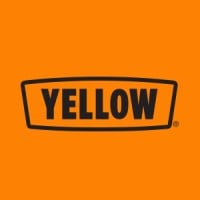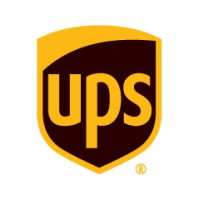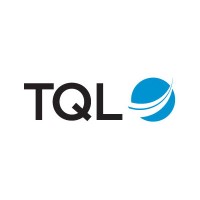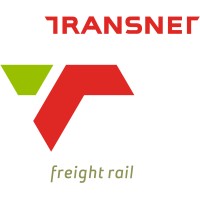
J.B. Hunt Transport Services, Inc. Company Cyber Security Posture
jbhunt.comJ.B. Hunt Transport, Inc. is a Fortune 300 company that specializes in freight shipping for customers of all sizes. Our mission is to drive long-term value for our people, customers and shareholders while staying focused on our vision to create the most efficient transportation network in North America. Our foundations – People you trust. Technology that empowers. Capacity to deliver. – are what drives our business forward. Through industry-leading solutions and a mode-neutral model, we create exceptional value for customers through a variety of transportation services, including intermodal, dedicated, refrigerated, truckload, less-than-truckload, flatbed, last mile, transload and more. Our J.B. Hunt 360 technology serves as a digital freight marketplace that connects shippers and carriers in one platform that provides access and visibility.
JHTSI Company Details
jb-hunt-transport-services-inc
21967 employees
168318.0
484
Truck Transportation
jbhunt.com
Scan still pending
J.B_2813566
In-progress
Between 900 and 1000
This score is AI-generated and less favored by cyber insurers, who prefer the TPRM score.
 JHTSI Global Score
JHTSI Global Score.png)

J.B. Hunt Transport Services, Inc. Company Scoring based on AI Models
| Model Name | Date | Description | Current Score Difference | Score |
|---|---|---|---|---|
| AVERAGE-Industry | 03-12-2025 | This score represents the average cybersecurity rating of companies already scanned within the same industry. It provides a benchmark to compare an individual company's security posture against its industry peers. | N/A | Between 900 and 1000 |
J.B. Hunt Transport Services, Inc. Company Cyber Security News & History
| Entity | Type | Severity | Impact | Seen | Url ID | Details | View |
|---|---|---|---|---|---|---|---|
| J.B. Hunt Transport, Inc. | Breach | 50 | 2 | 8/2020 | JB-836072525 | Link | |
Rankiteo Explanation : Attack limited on finance or reputationDescription: The Washington Attorney General's Office reported that J.B. Hunt Transport, Inc. experienced a cybersecurity incident due to a configuration error in the Microsoft Power Apps portal. The breach involved unauthorized access to applicant information between August 17, 2020, and July 2, 2021, affecting 3,798 residents whose names and Social Security numbers were compromised. Notification letters were sent beginning October 20, 2021, to the affected residents, and J.B. Hunt is offering complimentary one-year subscriptions to credit monitoring services. | |||||||
J.B. Hunt Transport Services, Inc. Company Subsidiaries

J.B. Hunt Transport, Inc. is a Fortune 300 company that specializes in freight shipping for customers of all sizes. Our mission is to drive long-term value for our people, customers and shareholders while staying focused on our vision to create the most efficient transportation network in North America. Our foundations – People you trust. Technology that empowers. Capacity to deliver. – are what drives our business forward. Through industry-leading solutions and a mode-neutral model, we create exceptional value for customers through a variety of transportation services, including intermodal, dedicated, refrigerated, truckload, less-than-truckload, flatbed, last mile, transload and more. Our J.B. Hunt 360 technology serves as a digital freight marketplace that connects shippers and carriers in one platform that provides access and visibility.
Access Data Using Our API

Get company history
.png)
JHTSI Cyber Security News
J.B. Hunt Transport Services, Inc. Announces Second Quarter 2025 Earnings Release Date and Conference Call Information
J.B. Hunt's vision is to create the most efficient transportation network in North America. The company's industry-leading solutions and mode- ...
J.B. Hunt Transport Maintains Strong Dividend Payout: Key Dates and Payment Details Revealed
JB Hunt Transport Services, Inc. (NASDAQ:JBHT) announced today that its Board of Directors has declared a regular quarterly dividend on its common stock of $ 0 ...
J.B. Hunt Transport Services (JBHT): It’s “Amazing” That People Are Buying It, Says Jim Cramer
J.B. Hunt Transport Services, Inc. (NASDAQ:JBHT) is one of the biggest logistics and transportation companies in America. Its shares are ...
J.B. Hunt, BNSF and GMXT Launch Quantum de México for Service-Sensitive Freight Delivery
In 2024, J.B. Hunt, BNSF and GMXT launched intermodal service to and from Mexico through the Eagle Pass Gateway. Together, the three companies ...
J.B. Hunt stays the course despite burdensome capacity costs
J.B. Hunt missed second-quarter expectations Tuesday as soft freight demand and costs associated with carrying the capacity needed to meet ...
JB Hunt Transportation Services (JBHT) Had a Challenging Quarter. Here’s Why
Heartland Advisors, an investment management company, released its “Heartland Opportunistic Value Equity Strategy” first quarter 2025 ...
J.B. Hunt Profit Falls as Weak Freight Demand Persists
Trucking company is first major freight operator to report results since Trump began rolling out new tariffs.
J.B. Hunt Transport’s Q1 2025 Struggles: A Crosscurrent of Challenges and Strategic Shifts
J.B. Hunt Transport Services (NASDAQ: JBHT) delivered a mixed performance in its first quarter of 2025, with revenue dipping 1% to $2.92 ...
J.B. Hunt Transport’s Negligence Led to Large Scale Data Breach, Class Action Alleges
J.B. Hunt Transport's negligence and carelessness with job applicants' personal data resulted in a data breach that could see more than 230,000 ...

JHTSI Similar Companies

Yellow
Yellow, a Fortune 500 company headquartered in Nashville, TN is one of the largest super-regional less-than-truckload (LTL) companies in North America. Nearly 100 years ago, Yellow created the LTL industry, and now it comprises four successful regional LTL companies and an in-house logistics brokera

UPS
Operating in more than 200 countries and territories, we’re committed to moving our world forward by delivering what matters. Beginning as a small messenger service, UPS was started by two enterprising teenagers and a $100 loan. Now, we’re almost 500,000 UPSers strong, with operations around the glo

Total Quality Logistics
The logistics industry is a $500 billion market. With annual sales over $8 billion, Total Quality Logistics (TQL) is one of the largest freight brokerage firms in the nation. TQL connects customers with truckload freight that needs to be moved with quality carriers who have the capacity to move it.

Schneider
Put us on the job and consider it done. Schneider is a premier provider of transportation and logistics services headquartered in Green Bay, Wisconsin, and with offices in Chicago, Dallas and many cities in between. Offering one of the broadest portfolios in the industry, Schneider’s solutions inclu

Transnet Freight Rail
Transnet Freight Rail is the largest division of Transnet SOC Ltd. It is a world class heavy haul freight rail company that specialises in the transportation of freight. The company maintains an extensive rail network across South Africa that connects with other rail networks in the sub-Saharan reg

Frequently Asked Questions
Explore insights on cybersecurity incidents, risk posture, and Rankiteo's assessments.
JHTSI CyberSecurity History Information
How many cyber incidents has JHTSI faced?
Total Incidents: According to Rankiteo, JHTSI has faced 1 incident in the past.
What types of cybersecurity incidents have occurred at JHTSI?
Incident Types: The types of cybersecurity incidents that have occurred incident Breach.
How does JHTSI detect and respond to cybersecurity incidents?
Detection and Response: The company detects and responds to cybersecurity incidents through communication strategy with Notification letters sent to affected residents.
Incident Details
Can you provide details on each incident?

Incident : Data Breach
Title: J.B. Hunt Transport Data Breach
Description: J.B. Hunt Transport, Inc. experienced a cybersecurity incident due to a configuration error in the Microsoft Power Apps portal, resulting in unauthorized access to applicant information.
Date Detected: 2021-07-02
Date Publicly Disclosed: 2021-10-20
Type: Data Breach
Attack Vector: Configuration Error
Vulnerability Exploited: Microsoft Power Apps portal configuration error
What are the most common types of attacks the company has faced?
Common Attack Types: The most common types of attacks the company has faced is Breach.
Impact of the Incidents
What was the impact of each incident?

Incident : Data Breach JB-836072525
Data Compromised: Names, Social Security numbers
What types of data are most commonly compromised in incidents?
Commonly Compromised Data Types: The types of data most commonly compromised in incidents are Names and Social Security numbers.
Which entities were affected by each incident?

Incident : Data Breach JB-836072525
Entity Type: Company
Industry: Transportation
Customers Affected: 3798
Response to the Incidents
What measures were taken in response to each incident?

Incident : Data Breach JB-836072525
Communication Strategy: Notification letters sent to affected residents
Data Breach Information
What type of data was compromised in each breach?

Incident : Data Breach JB-836072525
Type of Data Compromised: Names, Social Security numbers
Number of Records Exposed: 3798
Sensitivity of Data: High
Personally Identifiable Information: True
References
Where can I find more information about each incident?

Incident : Data Breach JB-836072525
Source: Washington Attorney General's Office
Where can stakeholders find additional resources on cybersecurity best practices?
Additional Resources: Stakeholders can find additional resources on cybersecurity best practices at and Source: Washington Attorney General's Office.
Investigation Status
How does the company communicate the status of incident investigations to stakeholders?
Communication of Investigation Status: The company communicates the status of incident investigations to stakeholders through was Notification letters sent to affected residents.
Stakeholder and Customer Advisories
Were there any advisories issued to stakeholders or customers for each incident?

Incident : Data Breach JB-836072525
Customer Advisories: Complimentary one-year subscriptions to credit monitoring services offered
What advisories does the company provide to stakeholders and customers following an incident?
Advisories Provided: The company provides the following advisories to stakeholders and customers following an incident: was Complimentary one-year subscriptions to credit monitoring services offered.
Post-Incident Analysis
What were the root causes and corrective actions taken for each incident?

Incident : Data Breach JB-836072525
Root Causes: Configuration error in Microsoft Power Apps portal
Additional Questions
Incident Details
What was the most recent incident detected?
Most Recent Incident Detected: The most recent incident detected was on 2021-07-02.
What was the most recent incident publicly disclosed?
Most Recent Incident Publicly Disclosed: The most recent incident publicly disclosed was on 2021-10-20.
Impact of the Incidents
What was the most significant data compromised in an incident?
Most Significant Data Compromised: The most significant data compromised in an incident were Names and Social Security numbers.
Data Breach Information
What was the most sensitive data compromised in a breach?
Most Sensitive Data Compromised: The most sensitive data compromised in a breach were Names and Social Security numbers.
What was the number of records exposed in the most significant breach?
Number of Records Exposed in Most Significant Breach: The number of records exposed in the most significant breach was 387.0.
References
What is the most recent source of information about an incident?
Most Recent Source: The most recent source of information about an incident is Washington Attorney General's Office.
Stakeholder and Customer Advisories
What was the most recent customer advisory issued?
Most Recent Customer Advisory: The most recent customer advisory issued was was an Complimentary one-year subscriptions to credit monitoring services offered.
What Do We Measure?
















Every week, Rankiteo analyzes billions of signals to give organizations a sharper, faster view of emerging risks. With deeper, more actionable intelligence at their fingertips, security teams can outpace threat actors, respond instantly to Zero-Day attacks, and dramatically shrink their risk exposure window.
These are some of the factors we use to calculate the overall score:
Identify exposed access points, detect misconfigured SSL certificates, and uncover vulnerabilities across the network infrastructure.
Gain visibility into the software components used within an organization to detect vulnerabilities, manage risk, and ensure supply chain security.
Monitor and manage all IT assets and their configurations to ensure accurate, real-time visibility across the company's technology environment.
Leverage real-time insights on active threats, malware campaigns, and emerging vulnerabilities to proactively defend against evolving cyberattacks.





